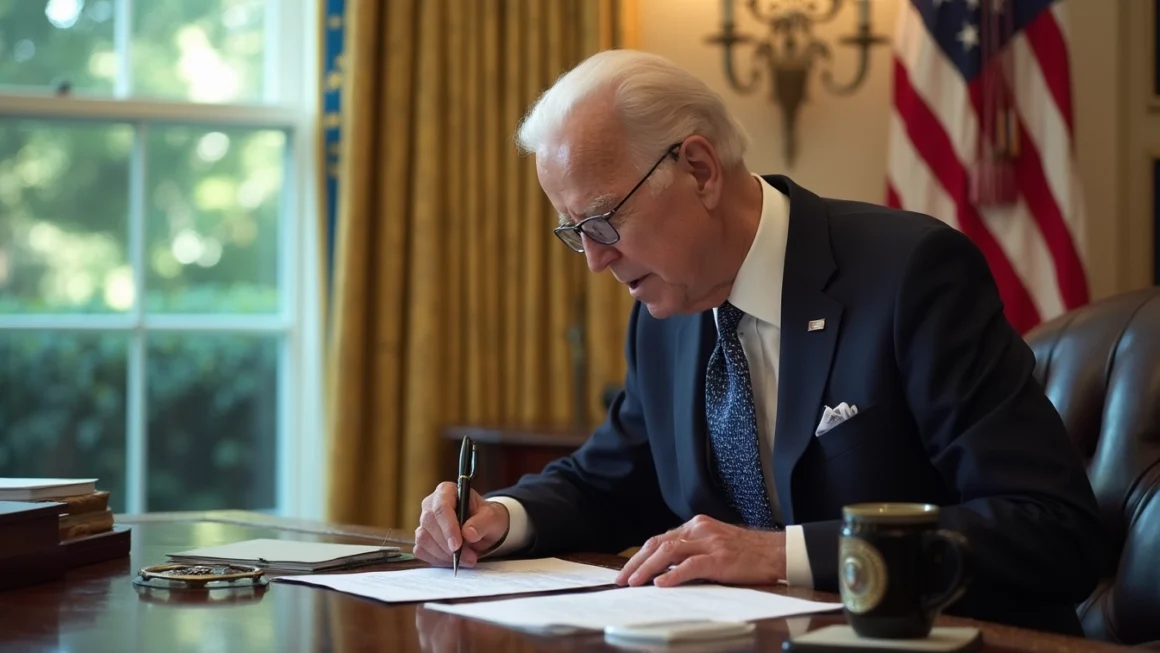In a groundbreaking move, the United States has taken a significant step towards addressing the growing concern of artificial intelligence (AI) regulation. President Joe Biden has signed an executive order aimed at establishing guardrails for AI development and usage, marking a pivotal moment in the nation’s approach to this rapidly evolving technology.
The Scope of the Executive Order
Table of Contents
The executive order is comprehensive, covering various aspects of AI development and implementation. It sets forth guidelines for federal agencies and private companies involved in AI research and applications. Some key areas addressed include:
- Safety and security measures for AI systems
- Protection of privacy and civil rights
- Promotion of innovation and competition
- Enhancement of US leadership in AI technology
This move comes at a crucial time when concerns about AI’s potential impacts on society, economy, and national security are at an all-time high.
Balancing Innovation and Regulation
One of the primary challenges in AI regulation is striking the right balance between fostering innovation and ensuring responsible development. The executive order aims to achieve this balance by:
- Encouraging research and development in AI technologies
- Setting standards for AI safety and ethics
- Promoting transparency in AI algorithms and decision-making processes
This approach is designed to maintain the United States’ competitive edge in AI while addressing potential risks associated with unchecked AI development.
Impact on Various Sectors
The executive order is expected to have far-reaching implications across multiple sectors:
Technology Industry
Tech giants and startups alike will need to align their AI development practices with the new guidelines. This could lead to more responsible AI innovation and potentially new compliance-related job opportunities.
Healthcare
AI in healthcare, particularly in diagnostics and treatment planning, will be subject to stricter safety and privacy standards, potentially improving patient trust and outcomes.
Finance
The use of AI in financial services, including credit scoring and fraud detection, will need to adhere to fairness and transparency requirements.
Education
AI-powered educational tools and platforms may see enhanced scrutiny to ensure equitable access and unbiased learning outcomes.
Global Implications
The US’s move to regulate AI is likely to have global repercussions. Other countries may follow suit, potentially leading to a more unified approach to AI governance worldwide. This could result in:
- International collaborations on AI safety standards
- Harmonization of AI regulations across borders
- Increased focus on ethical AI development globally
As AI continues to shape various aspects of our lives, the need for robust regulatory frameworks becomes increasingly apparent. The US executive order represents a significant step in this direction, potentially setting a precedent for global AI governance.
Challenges and Opportunities
While the executive order is a positive step, its implementation will face several challenges:
- Keeping pace with rapid technological advancements
- Ensuring compliance without stifling innovation
- Addressing the diverse applications of AI across different sectors
However, these challenges also present opportunities for growth and improvement in AI development practices. Companies and researchers that adapt quickly to these new guidelines may gain a competitive advantage in the evolving AI landscape.
The Road Ahead
As the world grapples with the implications of AI, the US executive order marks a significant milestone in the journey towards responsible AI development. It sets the stage for a future where AI technologies are not only powerful and innovative but also safe, ethical, and aligned with human values.
The coming months and years will be crucial in determining the effectiveness of this regulatory approach. Stakeholders across industries will need to collaborate closely with policymakers to ensure that AI regulation evolves in tandem with technological advancements.
In conclusion, the US executive order on AI regulation represents a bold step towards shaping the future of artificial intelligence. As we navigate this new era, it’s crucial to stay informed and engaged in the ongoing dialogue about AI’s role in our society. For those interested in exploring how AI and automation can be harnessed responsibly in various fields, automation tools can provide valuable insights into the practical applications of these technologies.
As we move forward, the global community will be watching closely to see how this regulatory framework unfolds and what it means for the future of AI innovation and governance.




